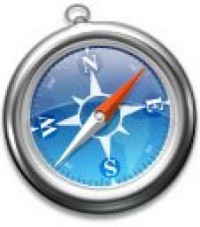Tiger update brings Safari headaches


I encountered this issue myself following the installation of the Combo Update. Safari stopped working in a rather bewildering manner: The browser would launch but not browse. If you clicked on a bookmark button, nothing would happen. If you entered a URL, it wouldn't seek the address. You could access menus and preferences but Safari wouldn't do what it was supposed to.
First off, I tried the usual magic fixes for performance: I emptied the cache (it's under the application menu) and quit Safari. Then I deleted the form values and download.plist files from the ~/Library/Safari folder; and then deleted the com.apple.Safari.plist preferences file from ~/Library/Preferences.
However, that process didn't do the trick.
In a hurry and without much thought, I copied back the older 2.x version of Safari from the clone I had made before updating. That reversal changed the app's behavior a bit, but Safari still didn't browse.
So, I returned Safari 3.0 to my Applications folder and launched Firefox. That browser still worked.
A quick look around the discussion boards showed that I wasn't alone with this problem. The culprit was the popular PicLens browser add-on for viewing online images. Once I had removed it from ~/Library/InputManagers, Safari worked. There are reports that the Leopard-compatible PicLens update fixes this issue. A post on MacInTouch by Kevin Purcell also suggests removing the SIMBL (Smart InputManager Bundle Loader) and Internet Plug-ins from their respective folders in user and root level Library folders.
Some commentators, such as John Gruber, say we should know better than rely on such hacks. And I agree to a point. It's not all Apple's fault when it introduces something that breaks an "unsupported" feature provided by a third-party developer — even if that feature is popular and useful.
However, I suggest that most of us forget that these "hacks" are hacks. We install them one evening and then grow accustomed to the capability. It's easy to forget this or that feature isn't really a part of the standard application. We accept it into the workflow and it becomes a part of the general user interface on our particular Mac. Until they break, of course.
Perhaps Apple should stop blaming users and developers for taking on these little hacks and acknowledge their existence? The installer could look for them during the update and move them to another folder and then report that action to the user. It's not as if they are so deeply buried that they can't be easily uncovered and moved.
Most of the time, I run Firefox 2 as my standard browser. In the past, I've also used the Shiira browser, a project from Japan that is based on Webkit. The Core Image page transition effect in the browser is a lot of fun.
What browser do you prefer?